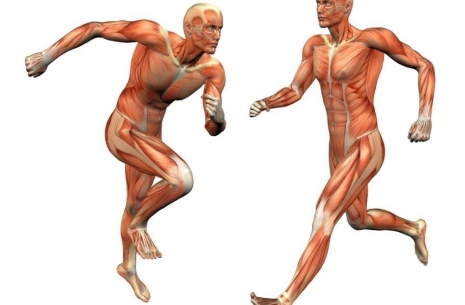
As I’ve noticed in my trainings, many people complain about pains in the shoulder area. This can be caused by many things, but the most common reason, in my experience, is trouble with the tendon of the long head of the double-headed shoulder muscle. ()
The most common injuries happen to this particular tendon – why is that?
To clarify, we need to look into the works of the shoulder joint.
The shoulder joint is a ball joint, with 3 degrees of mobility and the largest range of motion in the human body, due to small joint pane and large head, with next to no limits in movement. Additionally, a very spacious and loose joint sac poses no limit to the movements, and ligaments that stabilize the joint are only two. That’s why you can make all sorts of moves, like swings and circles. The main stabilizers of the shoulder joint are muscles, especially the shoulder muscle.
And so, the large mobility of the joint puts it in danger of more injuries, because there is a large probability of overstraining the muscular structures involved in an arm fight. All the delicate structures are then endangered by the intensified movement of muscle, which not only generates power, but also have to stabilize the head of the arm bone in the joint. And therein lies the rub – vast mobility means more possibility of strains, sprains and tears, especially within the more delicate structures, which are hard put to stay intact due to large stresses like the ones caused by armwrestling. This is the case for the tendon of the large head of the double-headed shoulder muscle. This structure has its beginnings in the tuberculum supraglenoidale of the scapula, inside the joint sac. The tendon then punctures the joint sac, lining the notch in the radius bone inside the fluid canal.
As we can see, this is a long tendon, and a complicated one. Such a complex structure with such high mobility is bad for stability under stress. What movements generate the most stress?
Let’s start with the function of the long head of the bicep. Inside the arm join it causes:
the abduction of the arm
pronation of the arm
bending of the arm joint
Inside the elbow joint, alongside the short head:
bending the arm
rotating the forearm
Now, let’s imagine a fight. The starting position and the positive movement of the upper limb and body is directed thus:
supination of the arm (arm joint)
slight bend in the elbow joint (elbow joint)
adduction in the shoulder joint (shoulder joint)
I’ve omitted the wrist movement on point, because it’s not the subject of the article.
If a fighter gains advantage and pins their opponent in the region of the large head of biceps, no great strain is applied, that could cause displacement. As clinical files show us, the first and foremost injuries happen when supinating the arm. In this position, the displacement risk for the tendon is very large. This is all the more possible in a position, where the fighter’s arm is adducted and pronated, and under tension. Then, when position is lost and supination happens, with arm still adducted (so as not to raise the elbow). That’s where the biggest tension happens in the tendon of the large bicep head, which “tends” biologically towards abduction and pronation. This kind of work can cause strains of over 130 percent.
How to diagnose, treat and rehabilitate injury?
Read on in the next part of this article.
Tomasz Kopeć



Archive >>>
Last week's most popular articles
The best holiday photo contest is still on!
Devon Larratt. No limits?
The most important day in life? The day I’ve found armwrestling